Research
[ ethical & equitable technology | healthcare & education ]
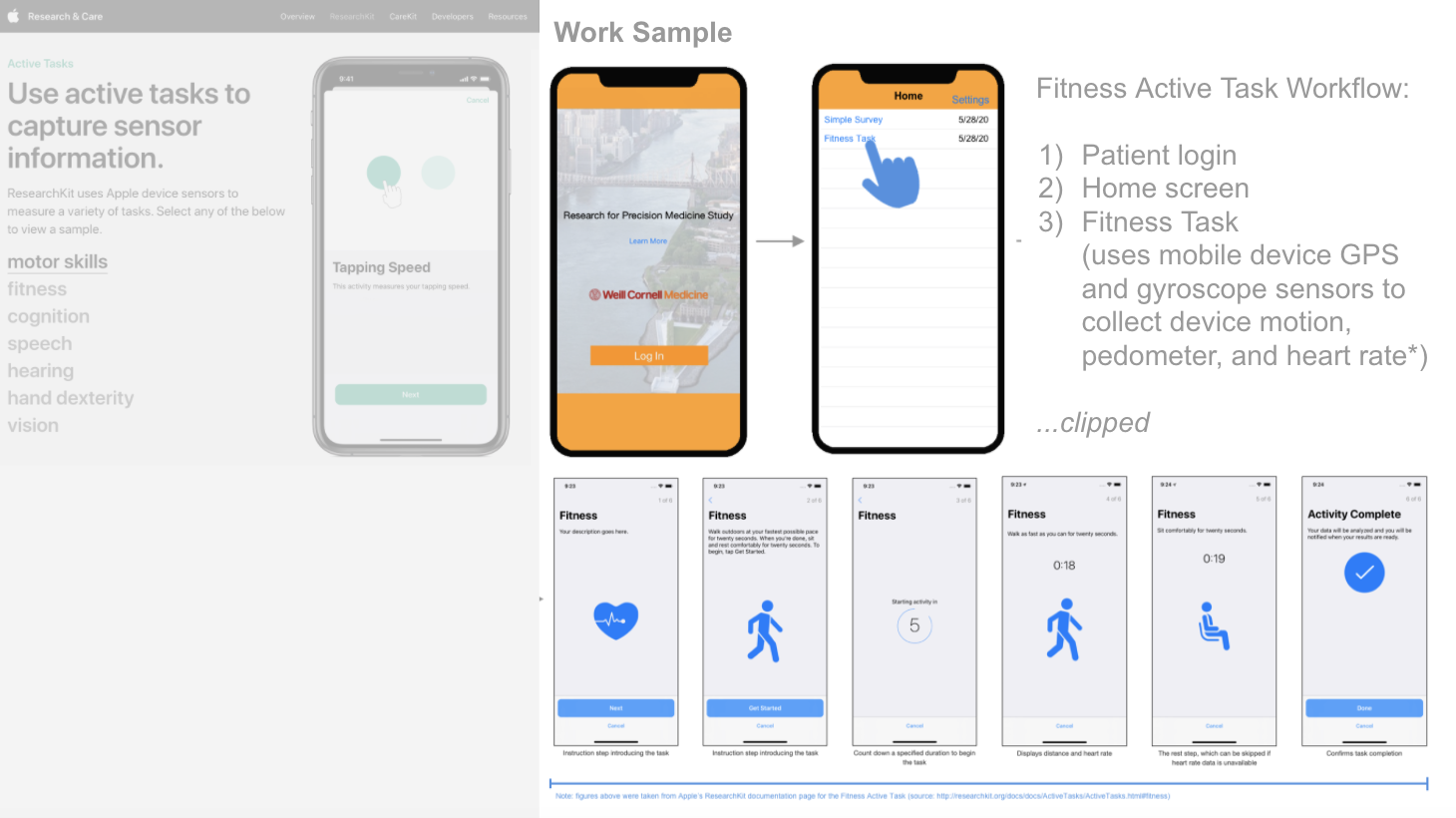
mHealth for Remote Cardiac Geriatric Health Assessments
Telemedicine advancements are improving healthcare assessibility, especialy during the COVID-19 pandemic. Today, clinicians face challenges in providing routine health assessments for older adult and heart failure populations, in the highest-risk group.
This project aims to test the feasibility and validity of using ResearchKit (Apple's open-sourced framework for developing mobile apps that can collect active and passive data via mobile devices and sensors for health research) to enable patients to use their mobile devices to complete health assessments from home.

Bioethics: Sharing PROs from a Heart Failure Symptom Monitoring Study with Patient Participants
This project explores ethical and design considerations for access, management, and use of clinical research data, such as Patient-reported Outcomes (PROs) like self-reported symptoms.
While it is not common practice to share research data with participants, the Patient Decision Support Lab at WCM is invested in empowering patients with chronic illness by developing accessible digital health tools that make health information clear and actionable.
Methods: interviews, qualitative inductive coding, survey
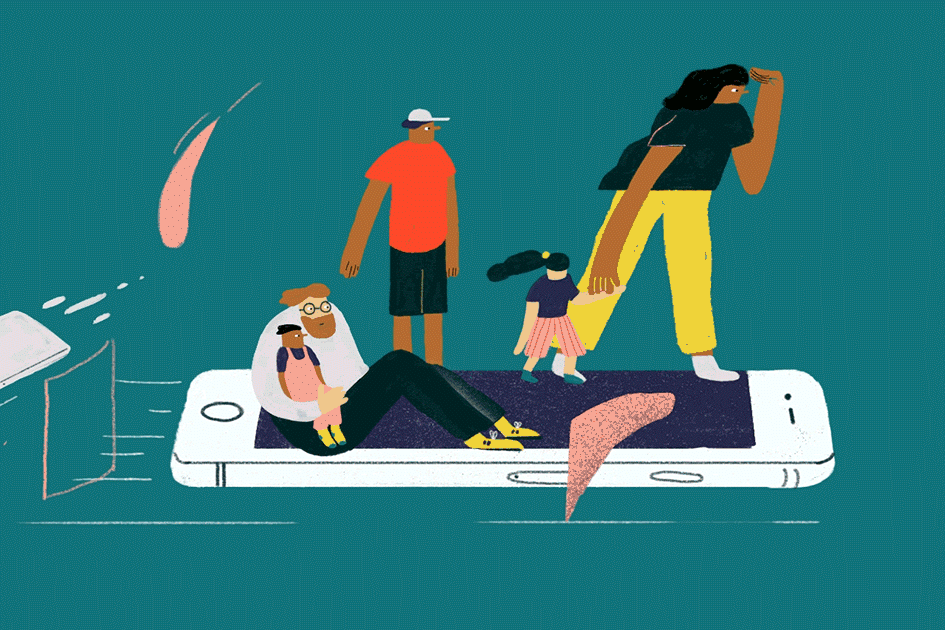
Empowering Resource-challenged Parents in Tweens' Digital Privacy Education
This project aims to develop a foundational understanding of low SES immigrant parents' challenges in supporting their kids to safely navigate privacy risks on social media.
Insights from this study will be used to inform future designs and curriculum development for Social Media TestDrive, an resource for teaching kids digital literacy and citizenship skills through experiential learning in a life-like social media simulation.
Methods: interviews, qualitative inductive coding
[ hci & design research | virtual reality, collaborative tech, communication ]
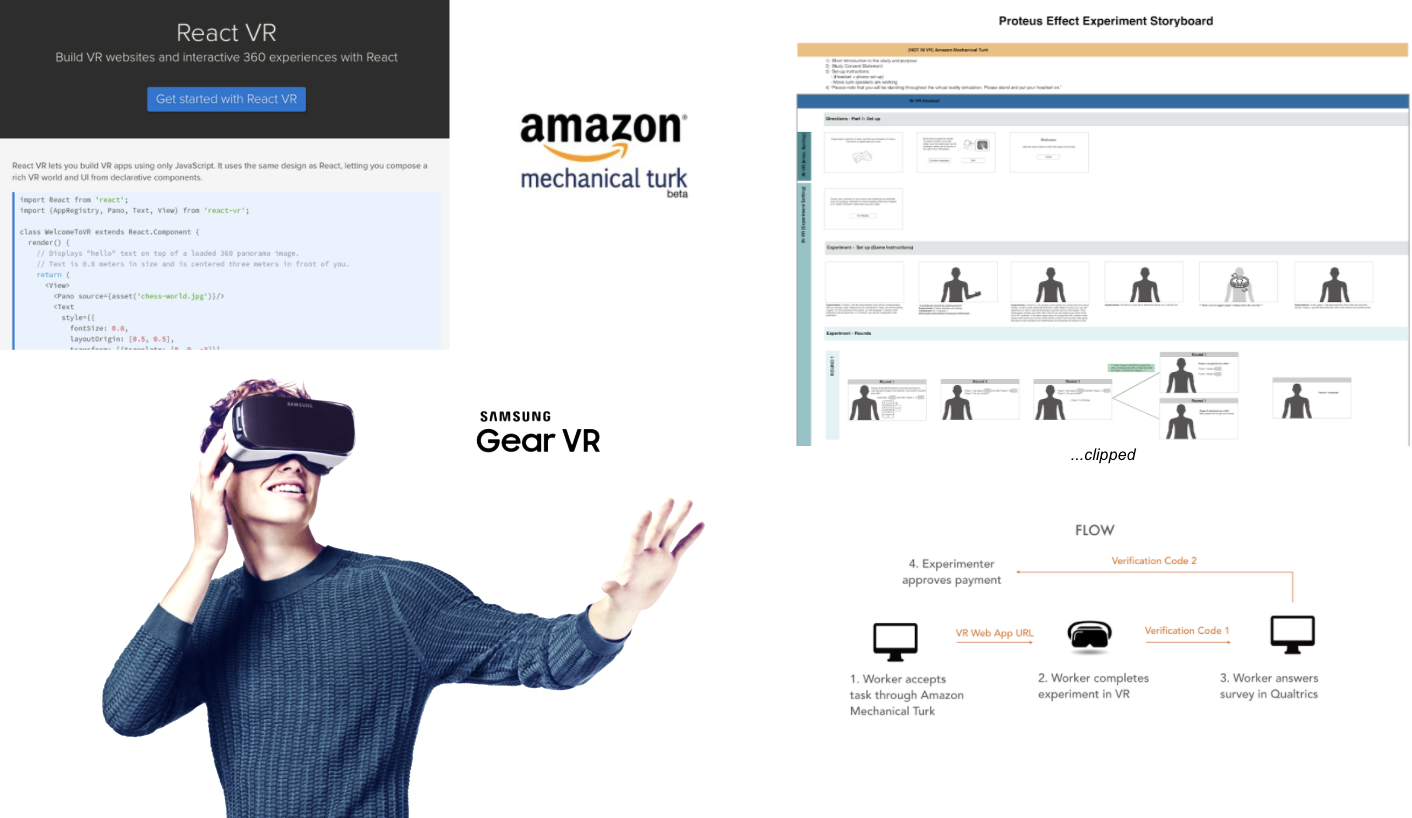
Web-based Virtual Reality Experiments Powered by the Crowd
This project demostrated the feasibility of using crowdsourcing and VR to improve research scalability and efficiency by successfully executing three web VR experiments with an automaed web-VR and crowdsourcing framework (ReactVR to run on Amazon Mechanical Turk).
We ran the world's first crowdsourced web-VR experiments!
Published in The Web Conference '18 [ link ]
Featured in [ Cornell Tech News ]
Invited demo at NYC Media Lab Expo '18 [ video ]

Co-presence and Geo-physical Distance Conceptualization in Virtual Reality
Virtual reality creates unique opportunities for human connection, as it delivers highly immersive experiences that can influence human senses, affects, and cognition. Since perceived geo-physical proximinity to and presence of a friend or family member has been linked to improved patient outcomes of surgical procedures, exploring how virtual reality delivers a sense of presence could reproduce similar postive effects to wellbeing and social support.
This pilot study explores how a heightened sense of co-presence from being in a shared virtual reality environment impacts how geo-physically far participants think they are from their conversation partner (a researcher acting as a confederate).
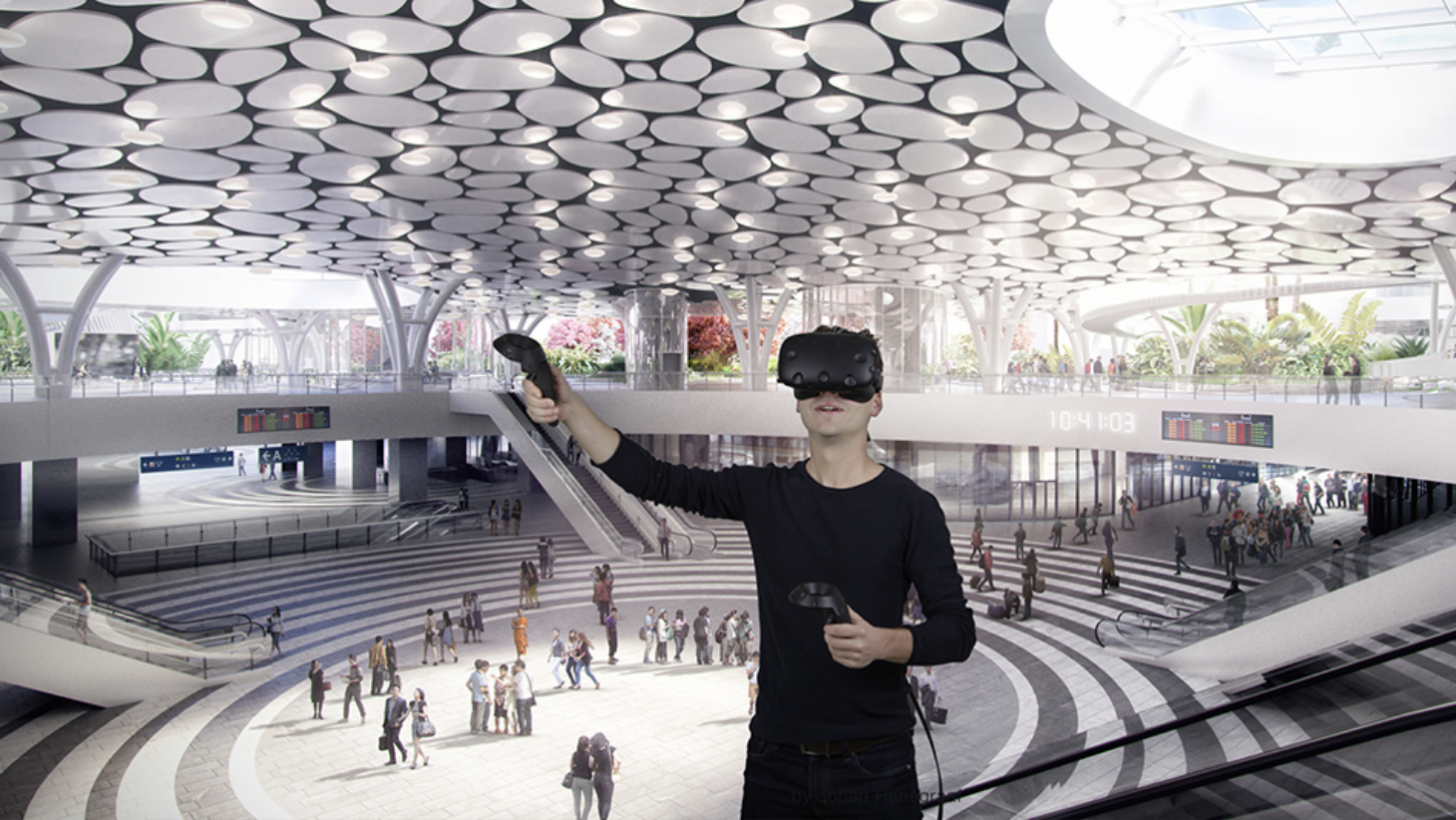
Animated Avatars in High-fidelity Virtual Reality Representations
Virtual reality is a widely used design communication tool in the architecture industry to simulate highly realistic renderings of building and design concepts. This enables architects to work with communities in sharing design concepts for new building and community space projects. Virtual reality software for architecture like Lumen delivers high-fidelity representations of buildings, but human design artifacts (background people) are often 2-dimensional figures or are static, which weakens the realistic nature and liveliness of the virtual reality experience.
To improve the liveliness of architectural virtual reality representations, this project explored the available technologies and workflows for adding animated avatars as lively, naturally moving 3-dimensional human figures into virtual reality architecture software.

"Autonomous" Telepresence Robots for Distributed Teamwork (in-person & remote members)
Video conferencing tools have enabled an unprecedented level of remote collaboration, but traditional video conferencing tools like Zoom and Google Meet deliver connectivity through a physically static devices like a phone or laptop. While walking while talking is relatively easy and doesn't require additional attention, "driving" a telepresence robot while talking is particularly challenging.
Inspired by self-driving cars, we proposed the idea of "autonomous" telepresence robots to address this challenge. This pilot study investigates how an "autonomously" moving telepresence robot impacts social dynamics for a distributed team working on a collaborative task.
Methods: lab study, usability testing
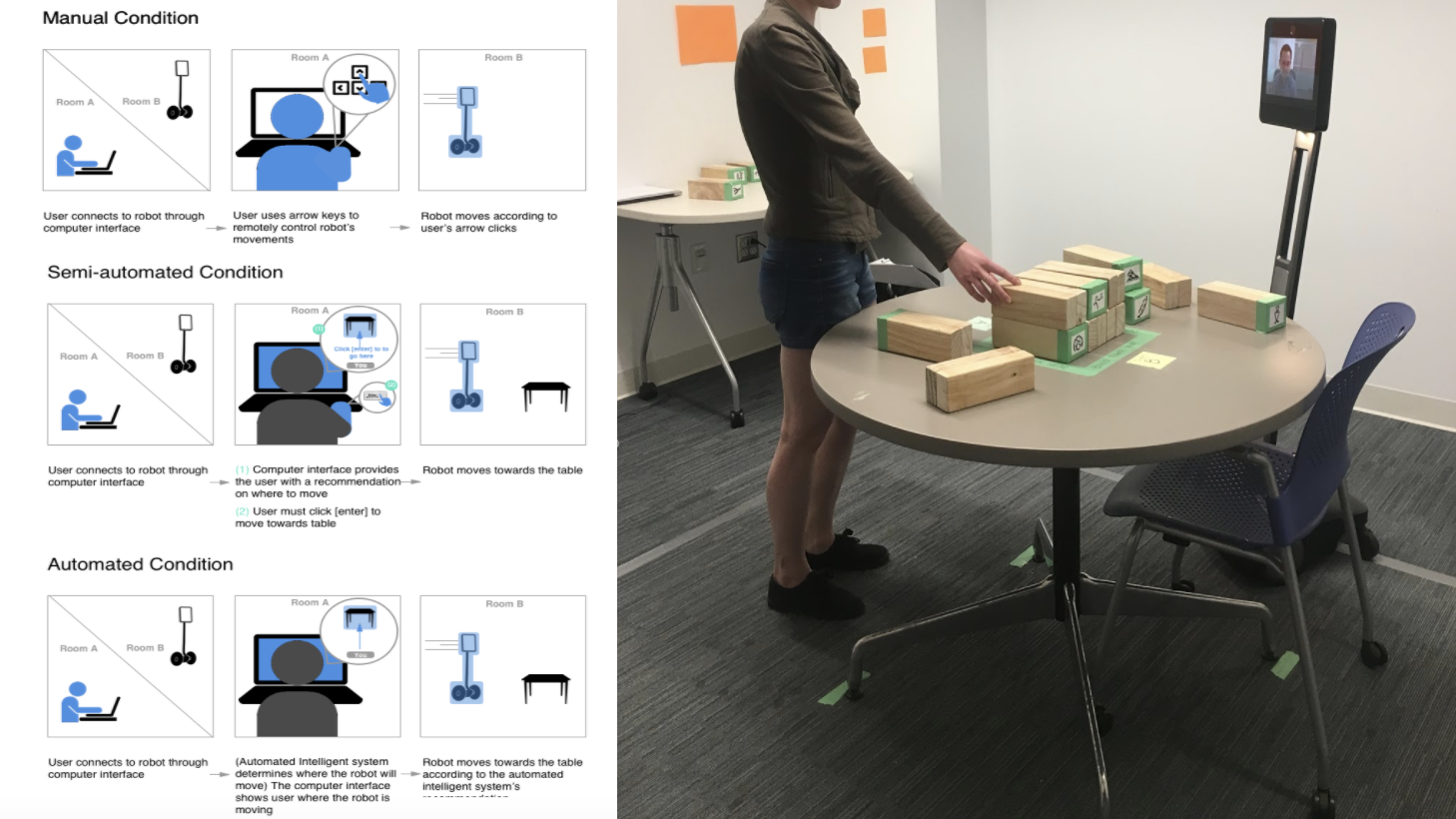
Levels of "Autonomous" Driving Features for Telepresence Robots
Telepresence robots are a novel technology with unique affordances: mobility and embodiment; they allow the user to "drive"/move the robot in the remote environment that they are video conferencing into, which heightens the driver's sense of presence in the remote environment.
This study investigates how users' level of control driving/operating the telepresence robot (full manual, semi-autonomous, full auntonomous) impacts their sense of presence and attention while working on a timed collaborative task in a remote environment.
Method: lab study, survey, interview, video analysis, usability testing, Wizard-of-Oz technique
Research Poster[ pdf ]

Perceptions of Interpersonal Trust Based on Information on User Profiles
With the growing ubiquity of mobile devices and computer-mediated communication technologies, it is becoming increasingly common for interpersonal interactions start online then shift to in-person. What makes people trust others online? What makes people who meet online want to meet in person?
This study examines how user interface designs for information on user profiles (e.g. anonimity, network, mutual connections/friends, proximinity/place, gender) on social networking profiles, dating applications impact perceived trust and willingness to engage with another in person.
Methods: survey
Research Poster[ pdf ]
User-centered Design & Technology Ethics Course Projects
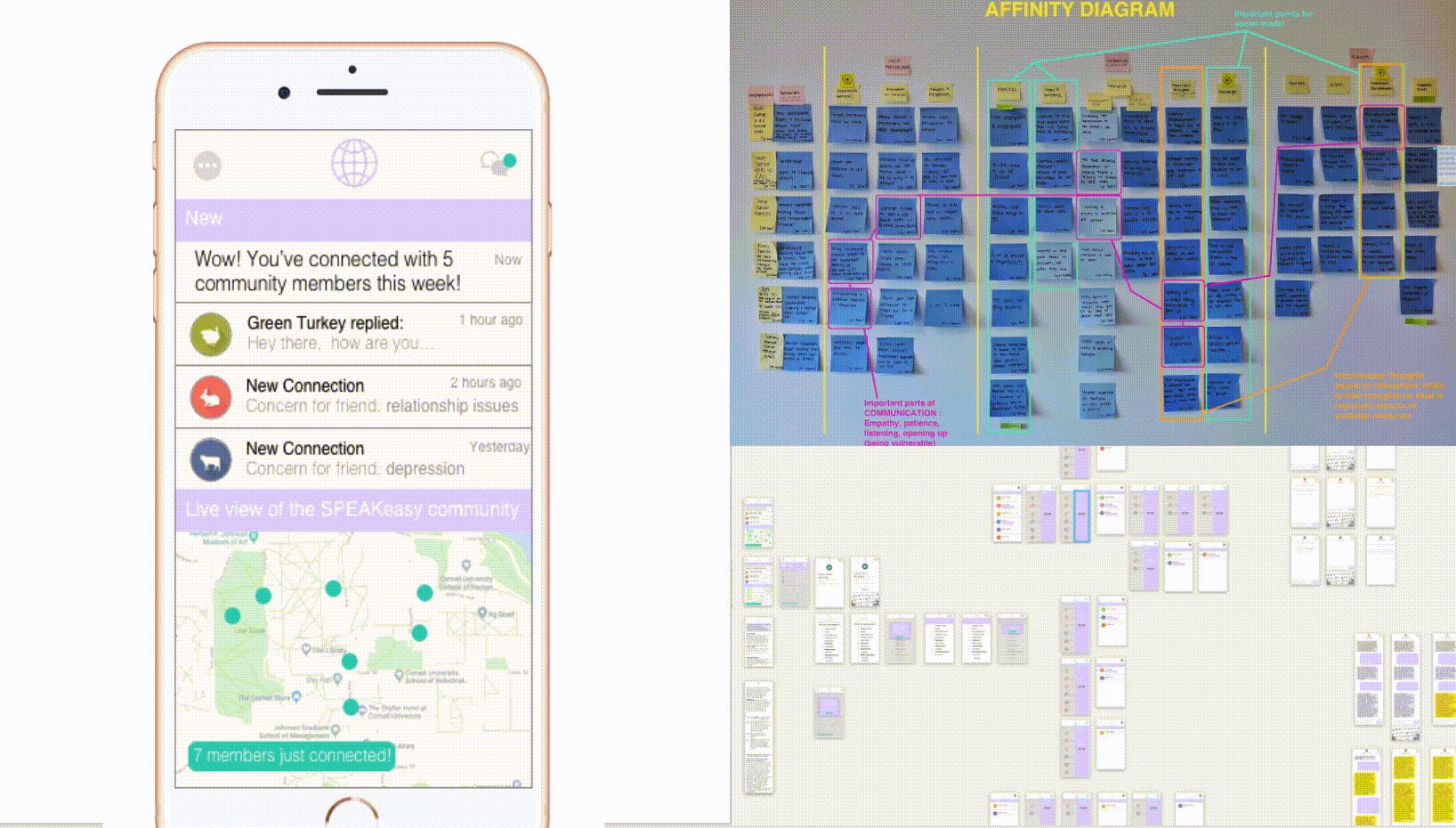
SPEAKeasy: A Mobile Platform For Connecting Friends of Friends with Mental Health Concerns
Goal: Design a solution to support students who have friends with a mental health concerns.
Solution: The application’s community is built upon a location-based, anonymous, peer-to-peer, network that enables students to talk to and seek support from one another regarding their friends. SPEAKeasy empowers students by providing a community and a safe space to talk about mental health.
Process: Our team applied human-centered design techniques to design and test an interactive prototype. Throughout the product design process, we created several iterations based on insights from our personas, user interviews, heuristic evaluations, and user testsing sessions.
Extended Abstract[ pdf ]

Term Paper Topics
Algorithm Awareness and User Experience
New Era, New Ethics: Technology Companies as Information Fiduciaries
Public Spaces of Cyber Space - Parallels Between Communities Online & Offline